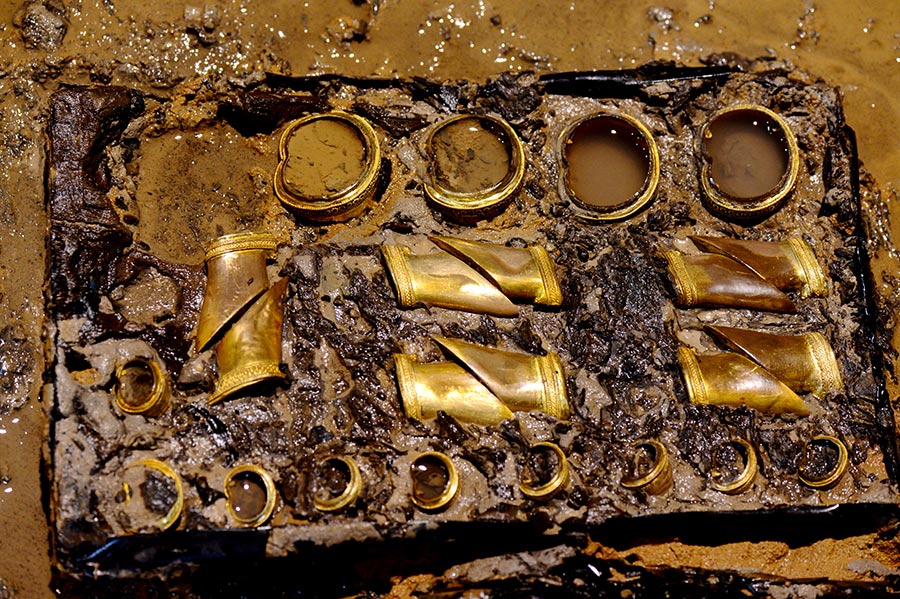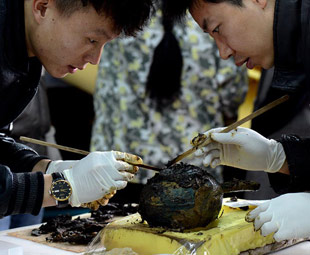Haihunhou: Remains of a short reign
 0 Comment(s)
0 Comment(s) Print
Print E-mail China Daily, December 22, 2015
E-mail China Daily, December 22, 2015
 |
|
Hoof-shaped ingots are found at the tomb site. [Photo by Guo Jing/China Daily] |
Xu Changqing, director of Jiangxi Provincial Archaeological Research Institution, says: "The large amount of gilded ware, lacquer ware, bronze vessels decorated with gold and silver, and musical instruments shows us the superb craftsmanship and techniques in the Western Han Dynasty."
But Professor Wang adds that the articles also reflect the Han nobles' artistic tastes.
The discovery of the remains of the caterpillar fungus could also change people's understanding of medicine in those times.
And ancient China's food culture is also under the spotlight based on some of the cooking vessels that were found.
For example, some bronze artifacts resemble a hotpot and distillation equipment.
Wang also says: "The quality of the artifacts can also be a crucial criterion in judging the prosperity of a society."
The archaeological excavation of this site began following a tomb-robbery case in 2011.
One of the retrieved gold articles following that robbery indicated that the tomb under attack belonged to a top official, possibly an emperor.
As Wang says: "If local villagers had not reported the matter in time and archaeologists had not worked hard, the cultural relics would have been scattered and relevant academic research would have been hampered due to a lack of information."
Shi Xiaofeng contributed to this story.





Go to Forum >>0 Comment(s)